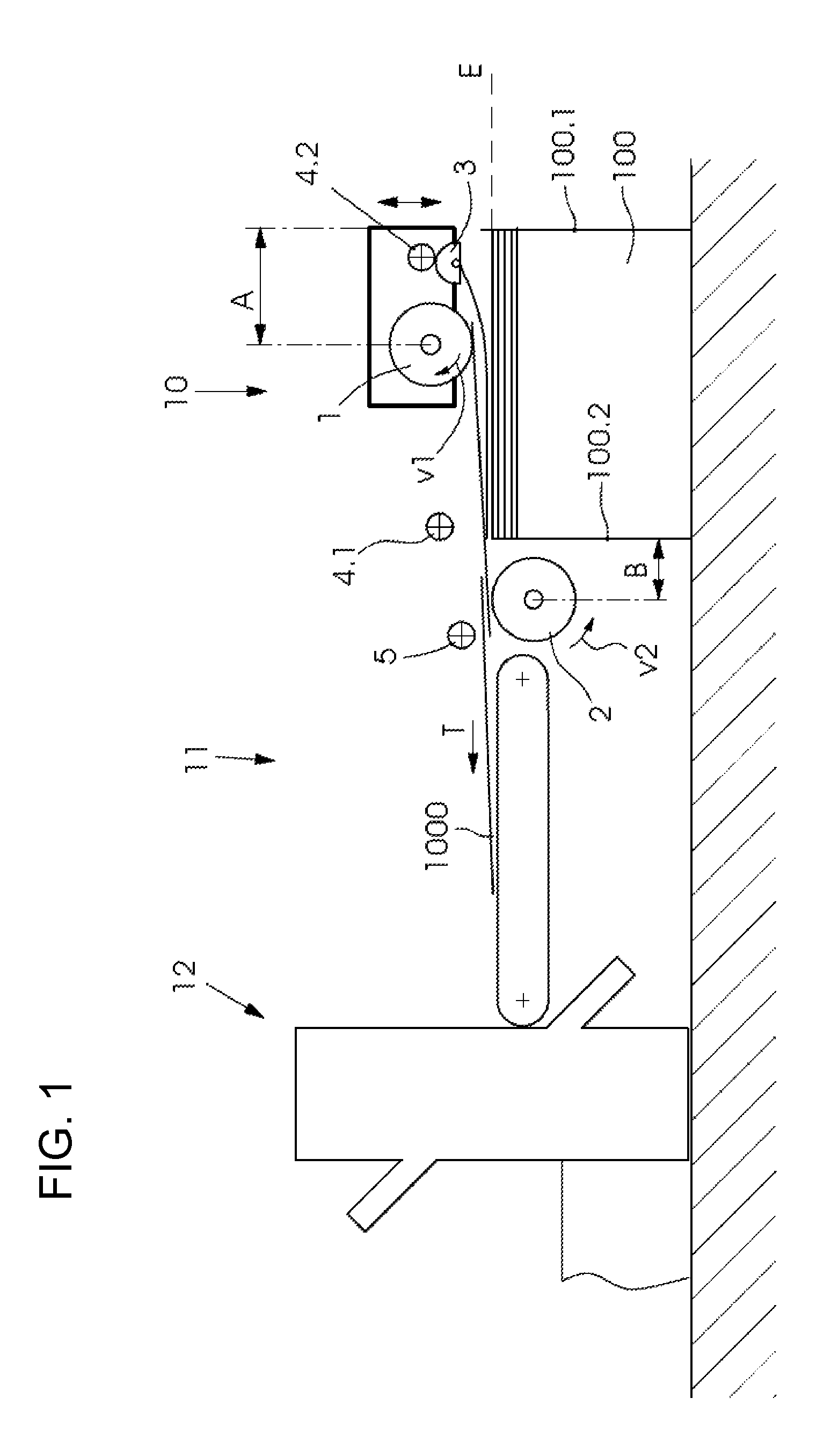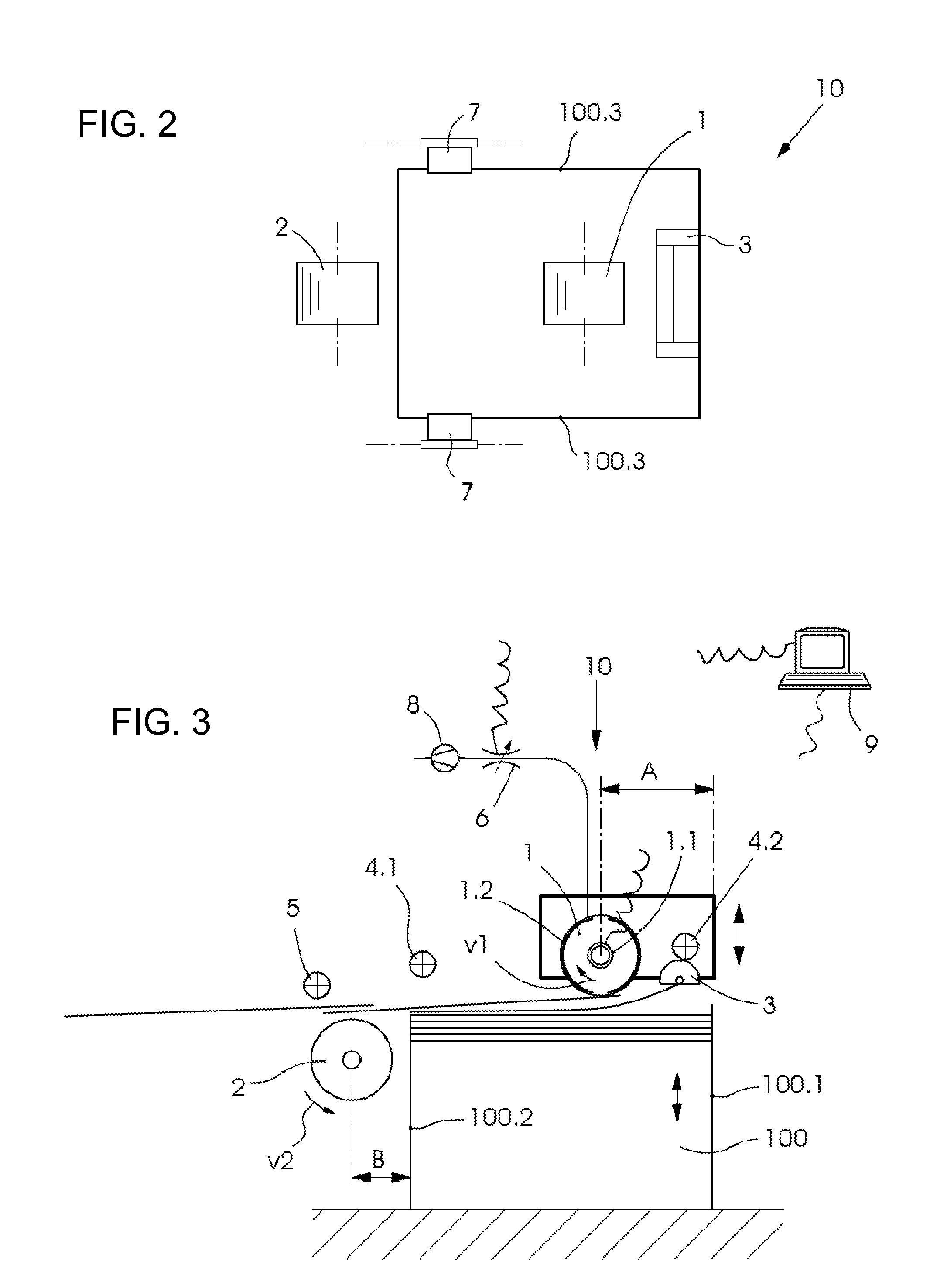Sheet feeder with two suction wheels
a feeder and suction wheel technology, applied in the field of feeders, can solve the problems of mechanical limitation of the speed increase of the dragging suction unit, the dragging suction element cannot be carried, and the sheet cannot be transported during, so as to achieve high reliability, increase throughput, and low energy consumption.
- Summary
- Abstract
- Description
- Claims
- Application Information
AI Technical Summary
Benefits of technology
Problems solved by technology
Method used
Image
Examples
Embodiment Construction
[0034]Referring now in detail to the figures of the drawings, in which like elements have like reference symbols, and first, particularly, to FIG. 1 thereof, there is seen a sheet feeder 10 of the invention for separating sheets 1000 from a stack 100 of sheets and for feeding the separated sheets 1000 over a feed table 11 to a machine 12 for processing sheets. The illustrated machine 12 for processing sheets is a buckle folding unit in a sheet-fed folder. The sheet feeder 10 includes a first suction wheel 1 and a second suction wheel 2. The first suction wheel 1 is disposed above the stack 100 of sheets. The second suction wheel 2 is disposed below a plane E of sheet travel and downstream of the stack 100 as viewed in a direction of sheet travel T. The axis of rotation of the first suction wheel 1 is at a first distance A from a rear edge 100.1 of the stack 100 of sheets. The second suction wheel 2 is disposed at a second distance B from a front edge 100.2 of the stack 100 of sheets...
PUM
 Login to View More
Login to View More Abstract
Description
Claims
Application Information
 Login to View More
Login to View More - R&D
- Intellectual Property
- Life Sciences
- Materials
- Tech Scout
- Unparalleled Data Quality
- Higher Quality Content
- 60% Fewer Hallucinations
Browse by: Latest US Patents, China's latest patents, Technical Efficacy Thesaurus, Application Domain, Technology Topic, Popular Technical Reports.
© 2025 PatSnap. All rights reserved.Legal|Privacy policy|Modern Slavery Act Transparency Statement|Sitemap|About US| Contact US: help@patsnap.com



